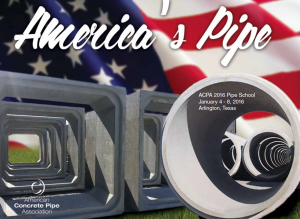(Water&WastesDigest.com) – More than 250 pipe industry professionals from across North America will gather here next month for the 2012 American Concrete Pipe Assn. (ACPA) Pipe School. Held Feb. 28 to March 2, 2012, this year’s school features several invaluable learning opportunities, including outstanding speakers, a Department of Transportation (DOT) panel discussion, product demos, plant tours and a post-installation demonstration complete with a laser video profiler.
This year’s theme, “Spring Training,” underscores the event’s focus on preparing participants for intense competition in the year ahead. Attendees will be schooled in the areas of production, quality, safety, sales and marketing, and engineering design.
Some highlights of this year’s event include:
· Tours of nearby Rinker and Hanson plants, featuring demos on proper RCP crack evaluation and post-installation inspection with laser video profiling;
· A panel discussion with DOT officials centered on key decision criteria such as quality, durability, cost and installation;
· Interactive sessions on continuous process improvement; and
· A team-building reception at the World Bowling Center.
“Everyone attending this year’s event will gain new insights into the most important aspects of their job, from quality to employee safety, new selling techniques to the latest technological advances,” said Childs. “Students will return to their employers armed with the latest information and cutting-edge tools they need to boost sales and improve operational performance.”


